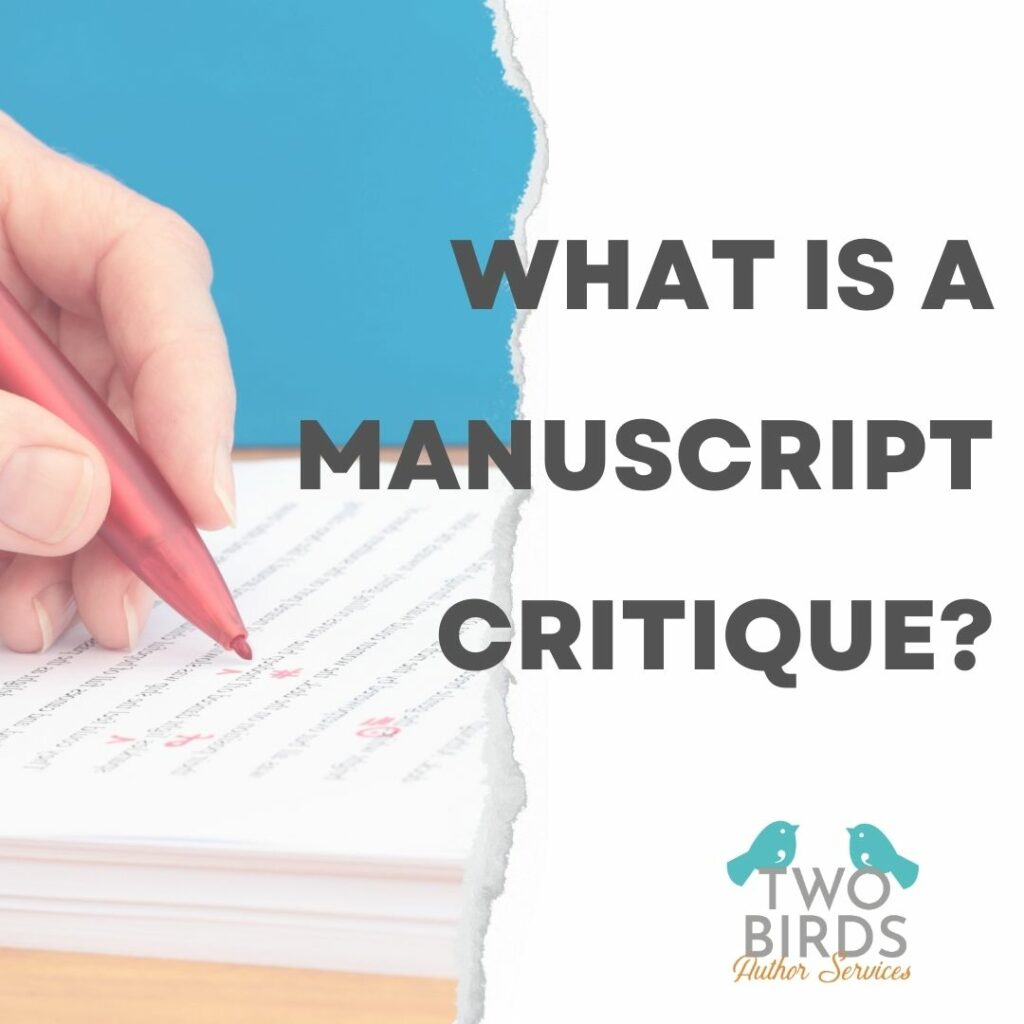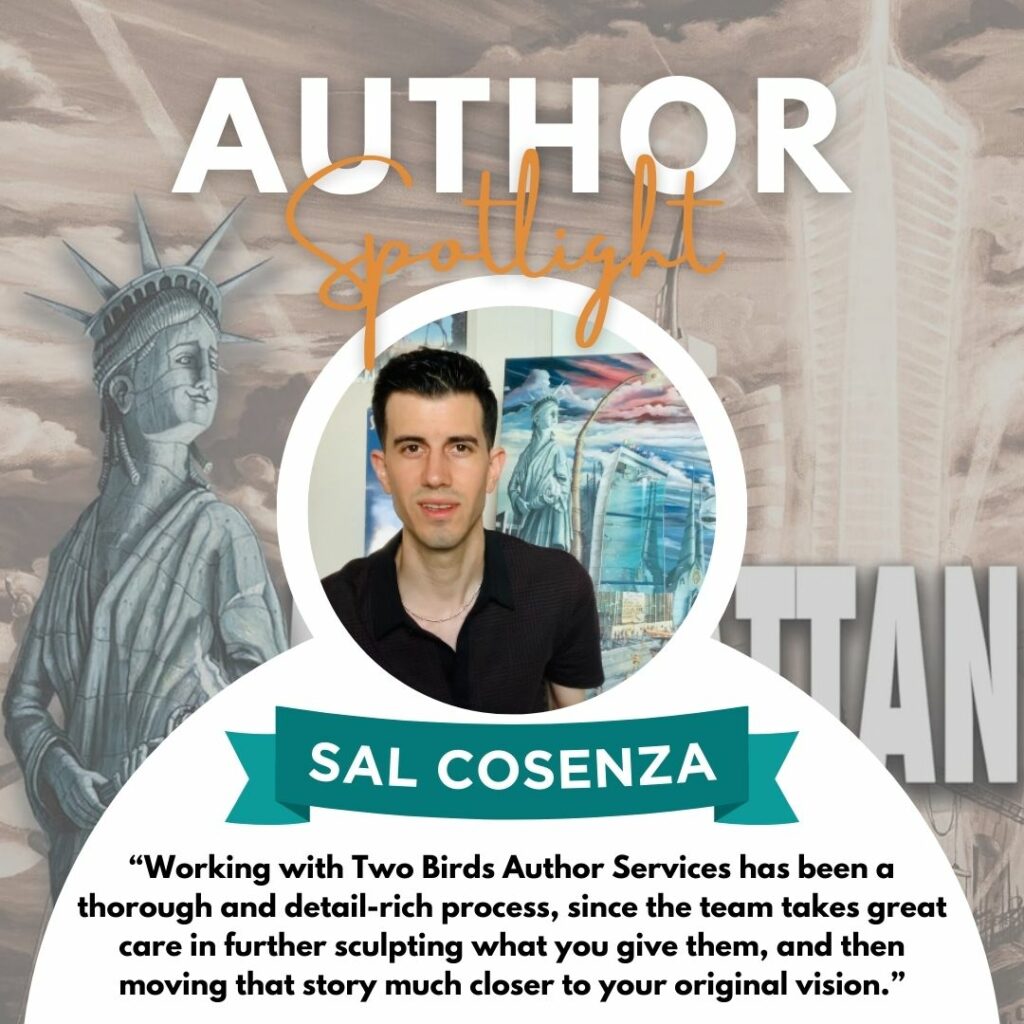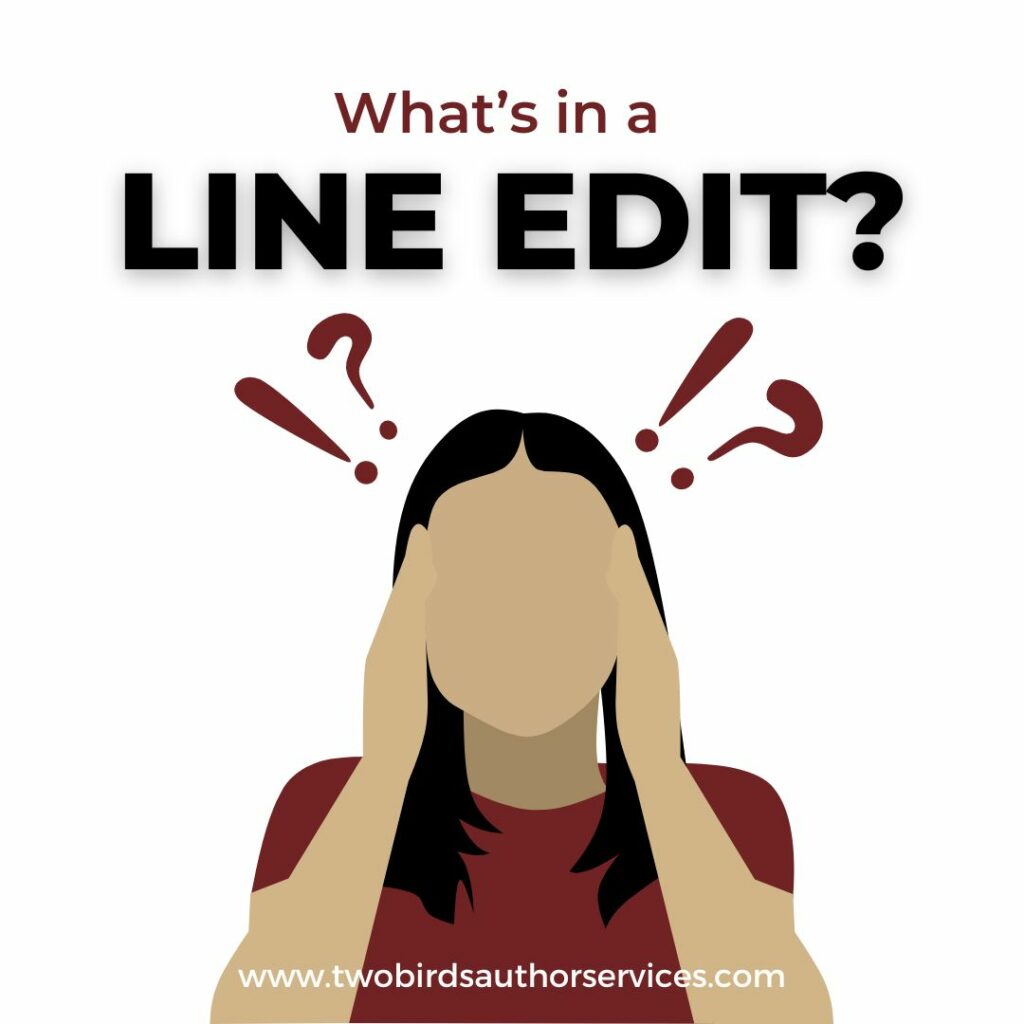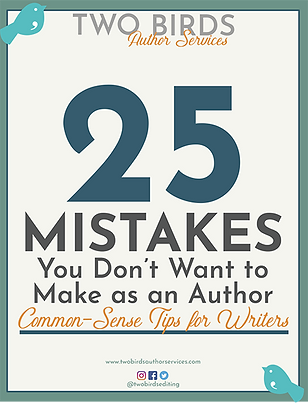Discover the benefits of having your book manuscript evaluated for strengths and weaknesses with a manuscript critique from our team.

You’ve got a draft of your fiction story finally written. It’s out of your head and on paper, and now you need to figure out what to do next. How do you figure out what kind of revisions need to be made? How do you assess how readers will see the book? This can be a challenge to do on your own, because you likely have blind spots about the draft—things you just can’t see clearly. Thankfully, a manuscript critique is a good way to pinpoint those blind spots so you can successfully shape the draft into a publishable, sellable book.
nn
Here’s what happens when Two Birds Author Services does a manuscript critique for you—and why you’ll be glad to have this kind of editing work done for you—before you publish.
n
Manuscript Critique Basics
n
What It Is:
Simply put, a manuscript critique (also called an evaluation) is a broad assessment of your draft. It takes a big picture view of the story, assesses its various aspects, and identifies strengths and weaknesses so you know what you’re looking at before you dive into revisions. It can raise questions that you need to consider, point out inconsistencies that will make the story fall apart in the reader’s mind, and offer some suggestions that may help you address the draft’s weaknesses successfully.
n
What It Isn’t:
Because this process gives you a big picture overview, your manuscript evaluation will not get into nitty-gritty details such as grammar, punctuation, minor phrasing issues (like word repetition), editing individual sentences, fixing dialogue tags, etc.
nn
The reason for not doing these things at this stage is simple: You might need to make large changes to your book based on the feedback you get. Some scenes might get totally rewritten, or even deleted. It’s only when the overall content and shape of the book is solid that line edits or proofreading make sense.
nn
Also, a manuscript critique is not a promise of marketing success. Sadly, even literary agents and traditional publishers can’t actually guarantee a book will sell. And even someone as famous as Stephen King or Nora Roberts or James Patterson could have a book that isn’t as successful as their other books. There are never any guarantees. But if you can put together a strong book that fits its genre well, appeals to readers, and gets seen in today’s busy marketplace, you have a better chance of making sales. A manuscript critique helps you become aware of what you might want to improve so you give your book its best chance of success.
n
What You Can Expect from Your Manuscript Critique
n
Like every book, every evaluation report we do is unique. We tailor our evaluation to fit your needs, and if you have specific questions you’d like us to think about as we read your draft, we absolutely want to know!
nn
But there are also some common denominators you can expect to see in your critique from our team.
n
Big Picture Feedback
While other forms of editing, such as line edits and proofreading, get into the nitty-gritty of your writing style, a critique is a different animal. It focuses on looking at the overall structure of your book and determining if all the bones of the skeleton are solidly in place. This is vital, because if you’re missing important elements of the skeleton or if they’re weak, the story is likely to break apart for the reader like a brittle bone.
n
Character Development
Most readers want to engage in a book where they either like and relate to the characters, or are at least intrigued by them. As we look at your draft, we’ll think about things like:
- n
- Are your characters consistent?
- Do their motivations make sense?
- Do they have traits that are likable, respectable, relatable, appealing?
- If they are anti-heroes, do they still have enough charisma to keep someone reading?
- Do they fit genre expectations?
n
n
n
n
n
This feedback applies to all major characters and relevant minor characters too. We’ll point out if a minor character feels like they could one day have a novel of their own (handy if you’re writing a series or spin-offs). And we’ll point out ways to strengthen character development so they feel like real people.
n
Plot Structure
One thing that can really pull readers out of a story and make them put the book down (and quit on it!) is a story that just doesn’t make sense to them. The plot has to be believable, in some way, or readers will disconnect. This doesn’t mean you can’t write a fantasy or science fiction book. What it means is that the internal logic of the book has to be consistent, and events have to feel connected. In fact, it’s best if they feel inevitable.
nn
You know… Like, once Luke Skywalker finds out Darth Vader is his father, we all know he’s going to have to talk to the guy. It’s inevitable. That’s what your plot needs. So, we’ll look at:
- n
- Does the plot feel well structured?
- Do events have clear consequences that make sense in the book’s world?
- Are there plot holes — places where things don’t get followed up on?
- Do events feel natural, or do they feel forced?
- Does the opening hook grab readers and make them want to keep reading?
n
n
n
n
n
n
Tone and Style Elements
Something that makes a book attract an audience is writing style, which can also tie into tone, so we’re mentioning both here. Style is really a mix of how you write: Are you lyrical? A poetic writer? A hard-bitten noir writer? A blunt, fast-paced action writer? Tone is more about flavor: Is your book light or dark? Gently funny or bitingly satiric? Serious or casual?
nn
You want your tone and style to both fit you as a writer and match your genre. A dark, biting, noirish Chick Lit book, for example, would be a strange mashup, hard to market. You want to at least be intentional about making those decisions.
n
Target Audience
Tied in to what we just talked about in tone and style, you also want to think about your ideal readers. It’s not a good idea to say to yourself, “I want everyone to read this book.” Look, we get that you want to be hugely successful. But even the biggest authors on the market don’t sell to everyone on the planet. They target what they do to people who love that type of story, and just manage to appeal to others too. We’ll consider questions like these:
- n
- Is it clear who will be the main readers of your book?
- Where would this book appear on the shelves?
- Will readers who go to those shelves read your book blurb and feel right at home with it? Or will they put it back, feeling it’s not for them?
n
n
n
Genre Expectations
In terms of genre, it’s important to realize that readers have expectations, and they often get upset if those expectations don’t get met. Those expectations give them comfort, and that’s ok, right? For example: An Amish romance wouldn’t have a lot of violent sex scenes and drug use, for example. You could write that, but Amish romance readers won’t read it, because they want something sweet and soothing, not dark and troubling. So, we’ll assess:
- n
- Is genre clear? Or is this a mashup? And is that mashup intentional?
- Will typical readers of this genre find the elements they’re expecting?
- What’s missing or out of alignment that could put off readers of this genre?
- If you’ve chosen to break genre expectations, are you clear on what type of readers will accept that?
n
n
n
n
Pacing
Gone are the days of slowly unfolding a story and characters that authors in the 1800s could get away with. Today’s readers want things to move at a good pace. You don’t have to rush, but you don’t want the story to lag in spots either. We’ll look at:
- n
- Are there places where story events feel like they take too long?
- Is there too much detail in places, dragging the pace slower than it needs to be?
- Are there points where things actually happen too fast, making it hard for readers to follow the action?
- Does the pacing fit with reader expectations for this genre?
n
n
n
n
Setting
Your story’s locations matter so much to how immersed readers get into the world you’ve created. This element is easy to overlook or downplay while you’re drafting your book, because it’s fun to write snappy dialogue and have characters doing things. But it’s the look, feel, sounds, smells, etc., of where the story takes place that helps readers feel like they’re actually there when the action is happening. In our manuscript critiques, we address issues such as:
- n
- Are the locations clearly sketched out for readers?
- When an event takes place, is it obvious where it’s happening?
- Is the time period clear?
- If the places mentioned exist in the real world, does the book align with what readers know about that real-world location?
- Has the writer taken advantage of opportunities to show all five senses throughout the draft when describing things?
n
n
n
n
n
Strengths, Weaknesses, and Other Open Questions
During your manuscript evaluation, you can also expect that you receive input on anything else that stands out about your book. You’ll receive information on what’s working and what needs improvement. If questions arise that we know you’ll need to consider and address during revisions, we’ll note those for you. This allows us to get specific for your book’s particular needs, beyond our general critique structure as mentioned above.
n
Discover the Benefits of a Manuscript Critique from Our Skilled Team
It’s important to find the right team to do your manuscript critique, and all your other editing needs too. Look for expertise in your genre, willingness to answer your questions, and a drive to provide quality input that benefits you. Having a good rapport with your editing team is essential, and it helps to chat with a few different people to locate the one who feels like the right fit for you.
nn
At Two Birds Author Services, we’re here to help you achieve the best book you can publish. We’d love to chat with you about your manuscript, and we offer editorial samples so you can see how we approach our work and find out if we’re a fit for your needs. Discover more by contacting us anytime.
nnn
Have questions about the editing process? We’d love to chat with you and help you figure out your next steps. ,Contact us to set up a free sample edit.
nn
Sign up to receive our monthly newsletter, full of more helpful info and special deals!
n




